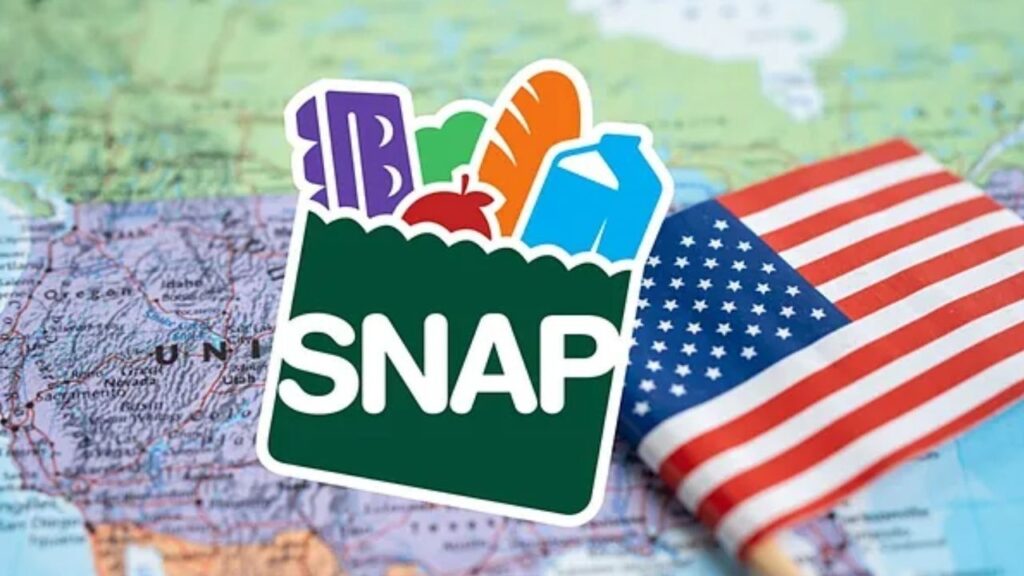Millions of Americans who rely upon the Supplemental Nutrition Assistance Program (SNAP) to afford groceries may be facing an unexpected financial shock this November. The U.S. Department of Agriculture (USDA) has announced a first-rate coverage rollback that could lessen or quickly suspend advantages for certain groups of recipients national.
This move — defined through officers as part of a “program recalibration” — comes at a time whilst food prices continue to be excessive, and lots of low-income households are already struggling to stretch their monthly budgets. If carried out completely, the USDA’s selection ought to affect thousands and thousands of households, especially those in states already facing administrative or investment delays.
What Is Happening With SNAP in November 2025?
According to current reviews, the USDA has started imposing benefit rollbacks and eligibility reviews under its new SNAP directive powerful November 1, 2025. The adjustments stem from the corporation’s try to standardize benefits throughout states, reduce overpayments, and implement stricter work necessities that had been increased in advance this year.
While the enterprise has no longer defined the trade as a “cut,” the effect will experience like one for many recipients. Some beneficiaries ought to see smaller deposits, at the same time as others may also experience a pause of their monthly help until they verify employment or income eligibility.
Several states, inclusive of Texas, Florida, Georgia, and Ohio, have already showed transient suspensions or discounts in gain distribution whilst they update eligibility facts.
Why Is the USDA Rolling Back SNAP Benefits?
The USDA cites several key reasons behind the rollback:
- Reassessment of Emergency Allotments:
During the pandemic, extra SNAP funds were distributed nationwide. Many states continued these elevated payments for years through federal waivers. The USDA says it is now ending those residual boosts to return SNAP to its pre-pandemic structure. - Implementation of New Work Rules:
Under the 2025 revisions to the Farm Bill and SNAP Act, able-bodied adults aged 18 to 54 without dependents must prove they are working or in job training for at least 80 hours per month to remain eligible. - Budget Realignment:
Rising federal costs and state-level administrative issues have prompted the USDA to reduce overpayment rates and tighten oversight, citing billions in potential errors or duplicate claims. - “Fairness and Program Integrity” Goals:
USDA officials argue that the rollback ensures resources are directed toward those who need them most, reducing fraud while preserving long-term funding stability.
Who Will Be Most Affected?
The SNAP rollback is not uniform — its impact will vary widely depending on where recipients live and their personal circumstances. Groups most likely to experience disruptions include:
- Single adults without youngsters who aren’t assembly the brand new work-hour thresholds.
- Households with previous eligibility documentation, which includes income verification or address modifications.
- States present process administrative system updates, wherein advantages can be quickly frozen.
- College college students and part-time workers, whose employment verification may take longer to procedure.
Families with children and seniors receiving fixed incomes may be much less affected, though a few should see not on time bills as states adjust to new reporting systems.

State Responses and Backlash
State agencies and advocacy groups have expressed deep concern about the sudden timing of the rollback.
- The National Hunger Coalition warned that thousands and thousands ought to enjoy “a food cliff” proper before the wintry weather vacations.
- Some governors have entreated the USDA to put off implementation until 2026, citing inadequate country infrastructure to manner new verifications.
- Food banks and network pantries are already preparing for surging demand as families brace for reduced monthly benefits.
In states like California and New York, officials are exploring temporary state-funded supplements to cushion the impact on residents.
What Recipients Should Do Now
If you rely on SNAP, here’s what you can do to ensure your benefits continue without interruption:
- Check Your Eligibility Status:
Log in for your state’s SNAP portal or touch your neighborhood Department of Human Services workplace to affirm work, earnings, and residency necessities. - Submit Updated Documents Promptly:
Make certain your most current pay stubs, utility payments, and identification documents are uploaded or mailed before your renewal deadline. - Report Changes in Income or Employment:
Even small income adjustments can affect eligibility — report updates as quickly as viable to keep away from suspension. - Explore Local Assistance Programs:
Food pantries, faculty meal packages, and charitable corporations may also offer emergency food relief if your benefits are delayed or reduced.
When Will the Rollback Take Effect?
The USDA has indicated that the adjustments commenced on November 1, 2025, with full implementation predicted by means of December 15, 2025. This way some recipients may additionally nonetheless receive partial benefits this month, whilst others could face delayed or decreased deposits depending on when their re-certification is processed. Recipients can take a look at their benefit fame on their EBT account or country SNAP portal for the modern day updates.
Conclusion
The USDA’s November 2025 SNAP rollback marks a dramatic trade for one in all America’s maximum critical safety net programs. While officials shield the flow as necessary for program integrity and price range efficiency, critics warn that millions may be left struggling to have enough money simple nutrients just as the holiday season begin.
If you’re a SNAP recipient, it’s vital to check your eligibility, update your files, and monitor your benefits account closely within the coming weeks. As debates keep in Congress and state capitals, the destiny of accelerated SNAP advantages stays unsure — but one factor is apparent: for thousands and thousands of low-income families, November 2025 should mark the start of a miles leaner winter.


